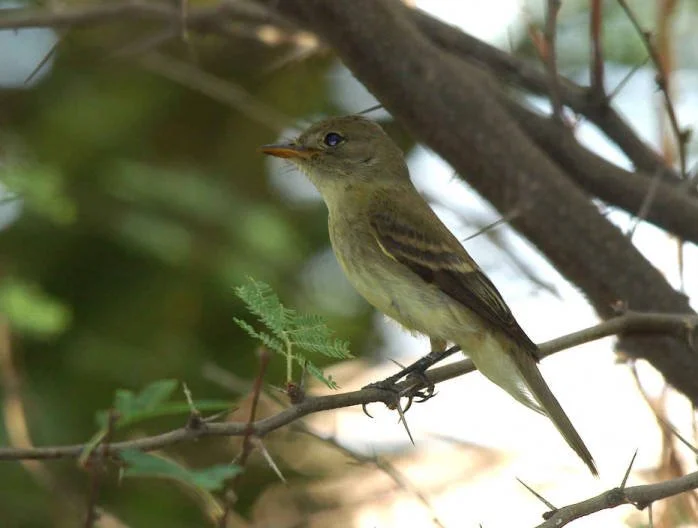Photo by: Jim Rorabaugh/USFWS
Southwestern Willow Flycatcher
Empidonax traillii extimus
-
Endangered
(fws.gov)
-
U.S. Endangered Species Act
(fws.gov)
-
The major threat is the loss and degradation of their dense riparian habitats. This is due to the increased risk of fires as a result of water developments that altered the flow of water sources and caused difficulties with regrowth. Additional issues come from human disturbances at nesting sites that lead to nest abandonment (fws.gov).
-
The states this bird is known to occur include Arizona, California, Colorado, Nevada, New Mexico, Texas, and Utah (fws.gov).
-
-
-
These birds require dense riparian habitats with cottonwood or willow trees and tamarisk vegetation. Paired with the microclimatic conditions of this environment, this makes the proper habitat for them to nest. The saturated soils, pools, and nearby streams are all important components to the microclimate and vegetation density. The parts of the habitat that southwestern willow flycatchers do not use for nesting are used for migration or foraging instead. During reproduction stages, these birds breed from late April to early May. Nesting then occurs in late May to early June, with females laying 3-4 eggs clutch usually once per year. The eggs are fertilized for about 12 days and following hatching, the young birds develop flight feathers roughly 2 weeks later. Their diet mainly consists of flying insects (fws.gov).
-
Currently, there is some research about the concerning biased sex ratios within the populations of this species, but this research lacks further investigation into the solutions to balance these ratios. Working on plans to solve this issue would be vital to their populations.
-
-
Southwestern willow flycatchers have an overall brownish-olive to gray-green backside and white throats with a pale olive/yellowish belly. In proportion to their heads, the beak is relatively large. They also have light-colored wing bars and a pale eye ring (fws.gov). Alder flycatchers look very similar to the southwestern willow flycatcher. They are mainly separated by their songs, as from afar, they look identical (allaboutbirds.org).
-

